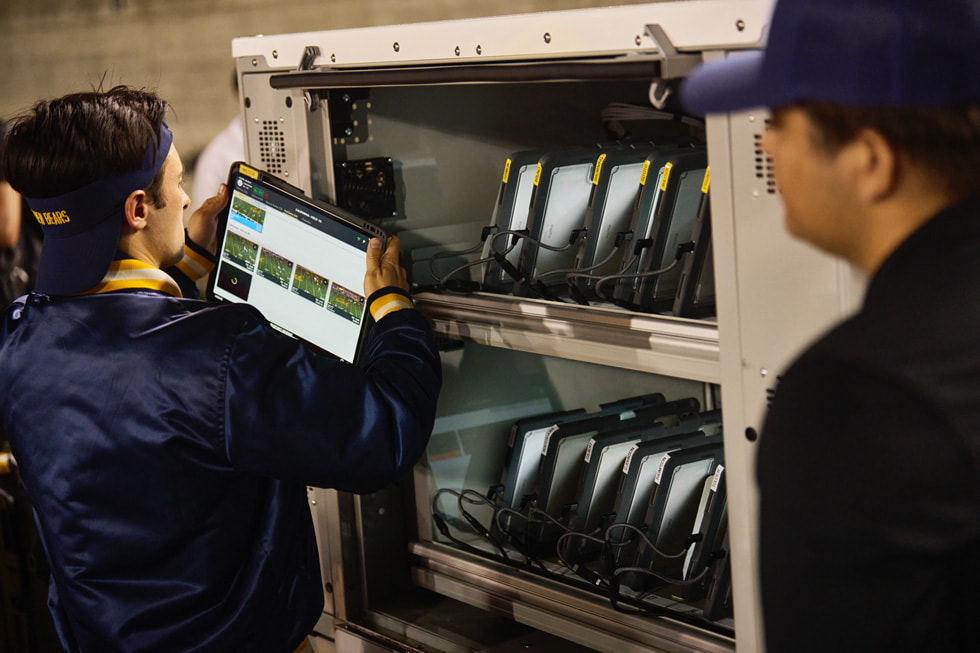apple stories
Driving the game forward: iPad teams up with college football
With the new nano-texture display glass and support for Apple Pencil Pro, iPad Pro with M4 seamlessly integrates into sidelines and brings new capabilities to coaches and players
Passionate tailgaters top off their bowls of jambalaya, a “Geaux Tigers” banner catches a rare breeze in the Louisiana heat, revved-up college students start to fill the stands, and over a dozen iPad Pros are on the field — it’s game day in Baton Rouge.
While the pregame revelry and Cajun cooking are longstanding traditions at Tiger Stadium, the iPad on the sidelines is entirely new: In April of this year, the NCAA approved a rule that allows college football teams to have up to 18 active tablets on hand for use on the sideline, in the coaching booth, and in the locker room during games. Taking advantage of this new rule, three conferences — the ACC, SEC, and Big Ten — chose iPad for their game day needs, including in-game video shot from the sidelines and end zone, as well as any broadcast feeds.
“The new iPad Pro with the nano-texture display technology is unbelievable,” says Doug Aucoin, Louisiana State University’s director of video. “If the nano-texture glass on the new iPad Pro wasn’t available, it would be almost impossible to view any footage on the field with the glare that comes from the sun.”
Battling the natural elements, especially glare, was an initial concern among college football staff and required technology unique to even what the NFL uses for sideline reviews. During games in the NFL, teams only have access to still images rather than video. Fortunately, iPad Pro’s new nano-texture glass maintains image quality and contrast while scattering ambient light for reduced glare, providing a solution well suited for viewing video outdoors.
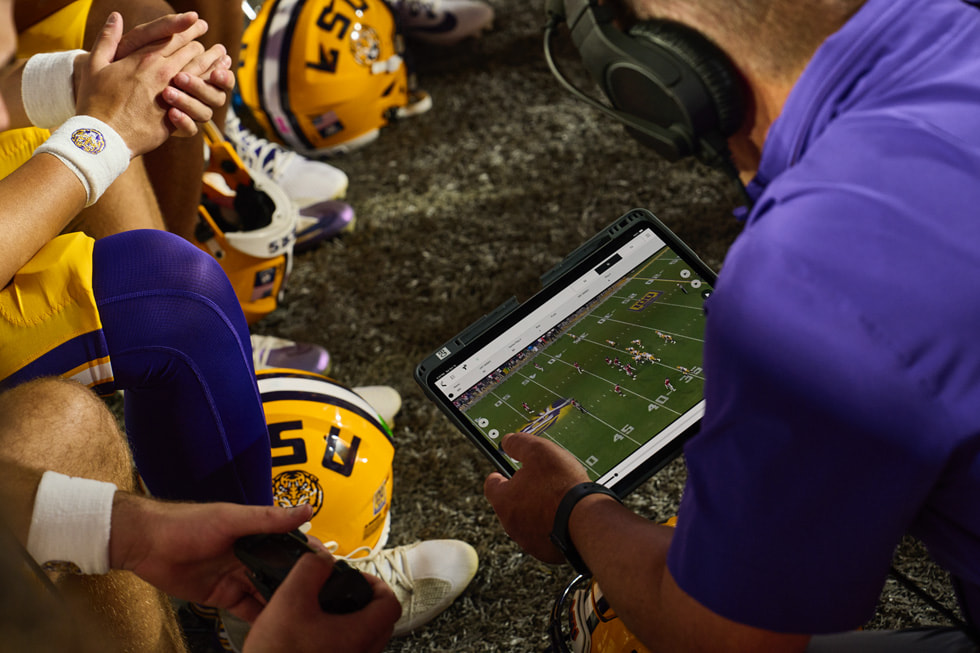
Aucoin, who has been dubbed “the godfather of SEC video coordinators,” and became an inductee in the College Sports Video Association’s Sports Film and Video Hall of Fame in 2022, has had a front-row seat to technology’s evolution in college football. He recalls that when he started working for LSU in 1997, one of the administrative assistants in the football office still had a typewriter on her desk. Today, he oversees a sophisticated game-day system that pairs iPad with sports software to deliver video into the hands of coaches within seconds of a play ending.
Catapult, a sports performance analytics company, is the software provider for all teams in the SEC. Here’s how the in-game video happens: Each team has their own independent videographers that shoot the end zone and sideline, and they also have access to the broadcast feed. Then, each team has a staff member who’s logging the game, meaning they’re tagging plays with details — such as down, distance, offense, defense, the phase of the kicking game, and runs or passes — that can later be used for analysis.
“As they’re tagging, we are in the background chopping up the video clips, synchronizing them, and sending the video packages to iPads that are both in the coaches’ press box and on the sidelines,” says Matt Bairos, Catapult’s chief product officer.
The end result is an in-game video solution that allows players to make adjustments the very next time they hit the field.
The ACC and Big Ten work with a software company called DVSport for in-game video. In these conferences, a central replay technician logs the game, and the home team shoots the sideline and end zone angles.
“DVSport’s work with Apple is a great example of new software and hardware working together to deliver game-changing solutions,” says Brian Lowe, DVSport’s president and CEO. “Equity, speed, and high visibility are core components of the solution, and Apple’s latest iPad Pro and iPad Air truly excel in providing a simple and elegant end user experience.”
“Having iPad on the sidelines makes coaching way more effective in-game,” says Mike Saffell, University of California, Berkeley’s tight ends coach. “Live feedback enables the players and coaches to correct quickly. It also makes the game more competitive since both teams are able to fix issues on game day.”
Cal’s starting quarterback, Fernando Mendoza, agrees. “Before, there were a lot of things that we couldn’t see until after the game, so it’s great to have that coaching on the sideline. When you’re on the field, football is the same football. But when you’re off the field, now you can go with the coaches, make adjustments, get coached up, and then go back in the game, which has helped young players’ development a lot,” he says.
In terms of integrating the new technology, Bairos — as well as multiple coaches — credits the familiarity of iPad for making the process seamless. “It’s easy to use, and it’s a familiar interface — there’s zero learning curve,” he says. “We can put an iPad with our software in the coaches’ hands and they’ll be self-sufficient. They understand how to use the iPad, and they understand the touch elements.”
Billy Glasscock, Ole Miss’s general manager, points out that Apple Pencil Pro is an added perk of using iPad. “If we are ever trying to install a play based off a look in-game, the Catapult app has a whiteboard function that we can use to draw with Apple Pencil Pro or our fingertips. There is also the ability to draw over the video clip,” he says.
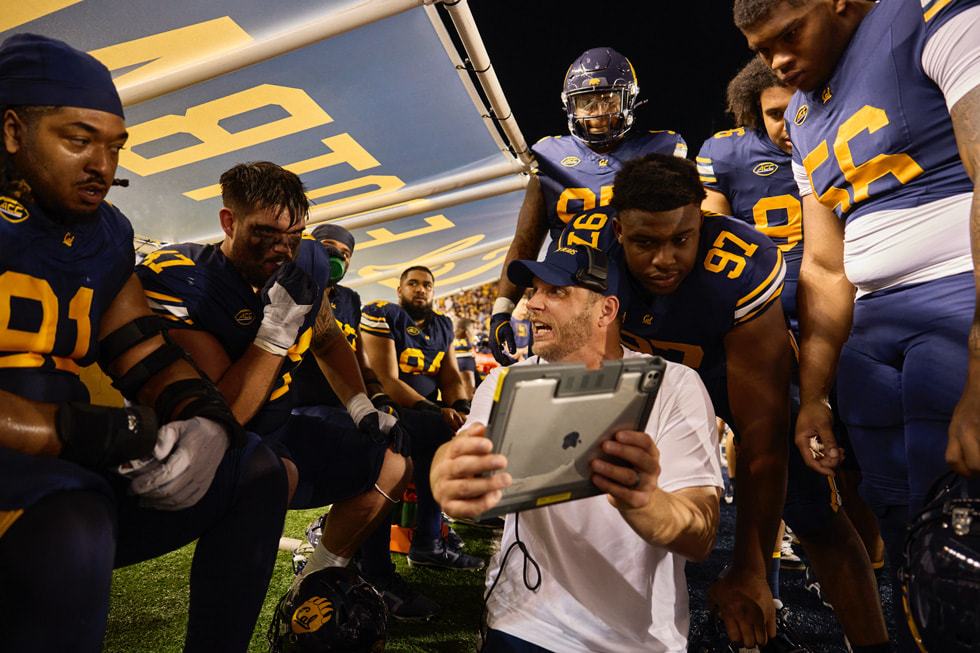
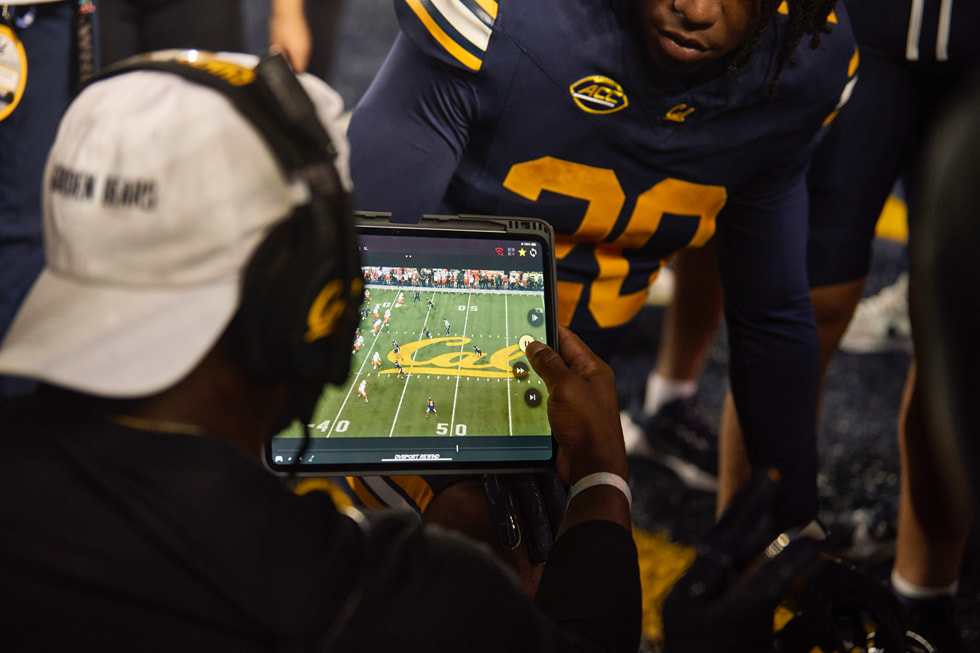
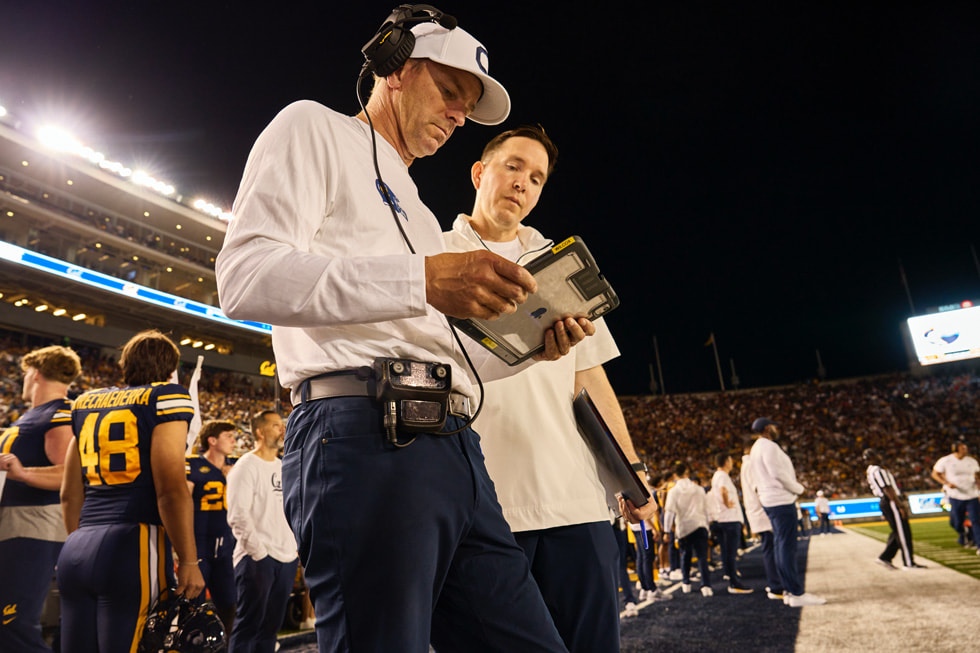
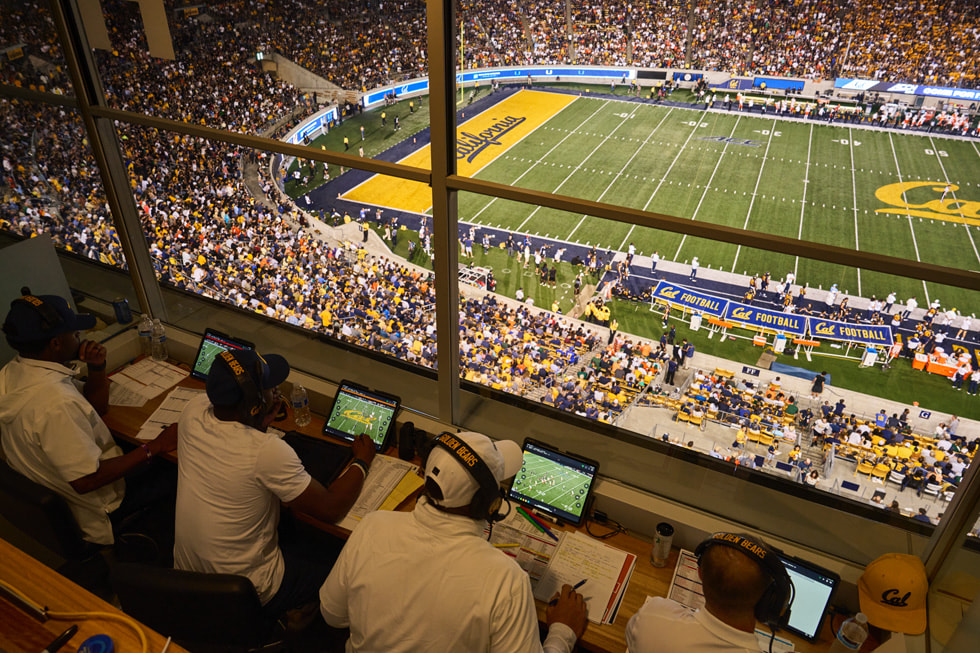
Rollout to players has also been seamless, given the players’ familiarity with iPad. “They grew up with these things in their hands,” says Alex Mirabal, the University of Miami’s offensive line coach.
Mirabal found iPad to be especially useful during a thrilling October matchup against Cal when the Hurricanes came from 25 points down to win by one. “On the sixth play of the game, we gave up a sack. So after the series, I was able to show the offensive line — ‘See, this is what got us,’” he says. “‘When we get this look again, this is how we need to address the situation.’ And later in the game, they brought the same exact blitz look and boom, we picked it up. So it’s very, very helpful.” Mirabal adds that the players often grab iPad to review on their own, especially at halftime.
“‘Where’s the iPad? Where’s the iPad?’ That’s the first thing we really do as soon as we come off,” says Isaiah Horton, a wide receiver for Miami. Horton points out that in addition to more efficient coaching, having iPad devices has also helped with player-to-player coordination. “It’s having that visual piece out there instead of just saying, ‘Hey, this is what I saw, but I don’t really know what you saw because quarterbacks are looking at one half of the field, and I’m on a whole opposite side of the field.’”
In the long run, Horton sees in-game iPad use changing the game for the better by keeping players and coaches on the same page. Mendoza sees a more strategy-driven game, and Glasscock envisions more complexity, with teams carrying additional plays into games knowing they may only be able to try something once before an opponent corrects for it. Mirabal sees a game that’s played at a higher level overall.
“It’s just a matter of us, as coaches, not being afraid of allowing technology to continue to get into the game,” says Mirabal. “But I don’t think — I know that the iPad usage on the sideline has tremendously impacted the game in a positive manner. There isn’t one coach in America that would say that it’s been negative.”
For Aucoin, there’s another layer to witnessing the impact iPad is making on the sidelines. His dad, Erby Aucoin, who became the NFL’s first full-time film director when the New Orleans Saints hired him in 1967, essentially pioneered the practice of in-game reviews when he concocted a system of snapping Polaroid pictures from the coaching booth and then sliding them down a wire to the sidelines for review.
“It went from the Polaroid cameras to thermal printers… and now we’ve evolved into the iPads with full-blown video in game,” says Aucoin. “And you know, my dad was the first one to do that many years ago. So it’s kind of a prideful moment for me to be able to see the evolution of this whole thing.”
Share article
Media
-
Text of this article
-
Images in this article


